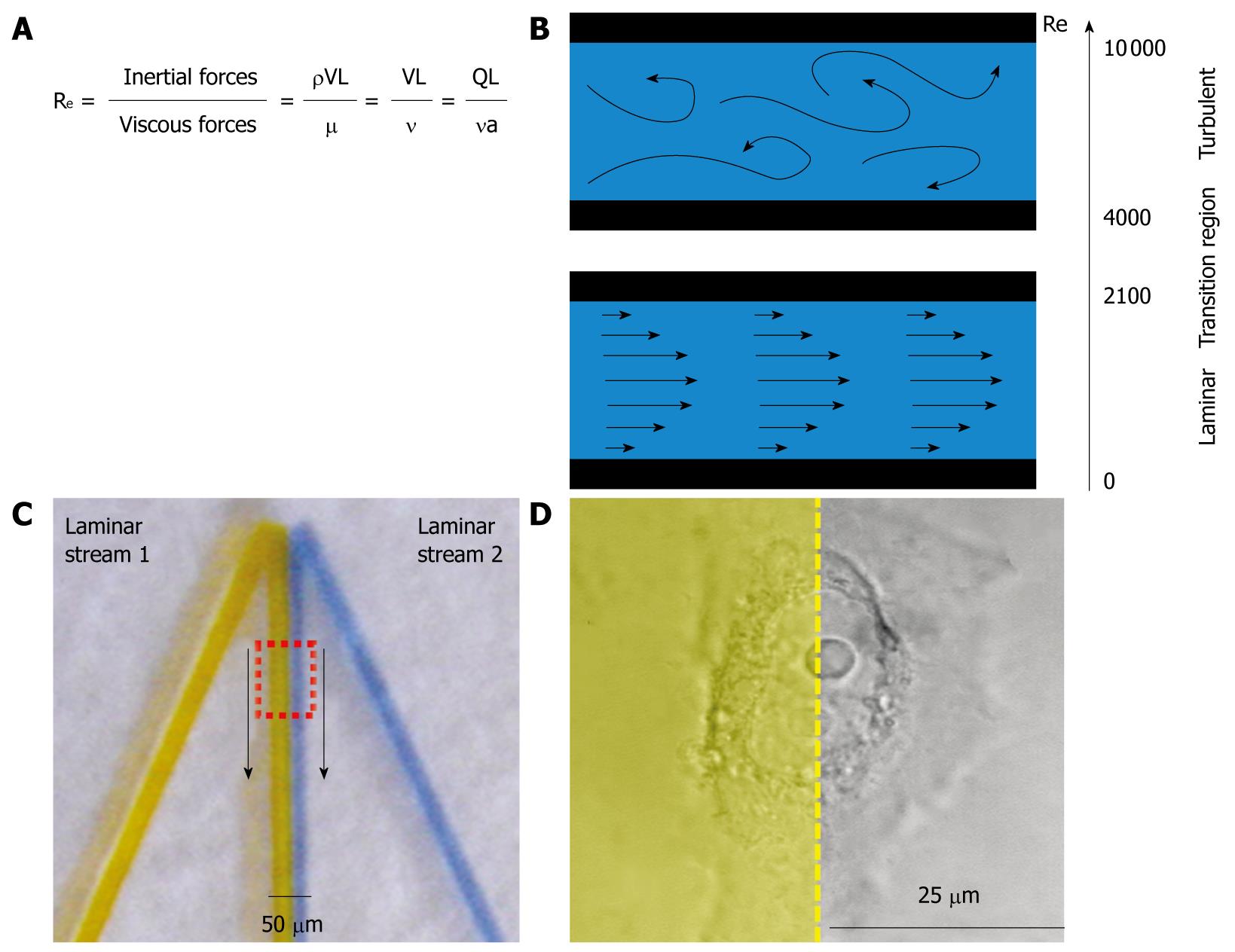Copyright
©2010 Baishideng Publishing Group Co.
World J Clin Oncol. Nov 10, 2010; 1(1): 18-23
Published online Nov 10, 2010. doi: 10.5306/wjco.v1.i1.18
Published online Nov 10, 2010. doi: 10.5306/wjco.v1.i1.18
Figure 2 Principles of microfluidics.
A: Microfluidics is aimed at manipulating liquids at ultralow volumes. The dimensionless parameter, the Reynolds number (Re), describes unique physical principles of the fluid in channels within a cross-sectional area as a function of the channel geometry, fluid viscosity and flow rate. Re is the measure of the ratio between the inertial to viscous forces where: ρ: density of the fluid (kg/m3); V: Mean fluid velocity (m/s); L: Length of the channel (m); μ: Dynamic fluid viscosity (Pa•s); ν: Kinematic fluid viscosity (m2/s); Q: Volumetric flow rate (m3/s); a: Cross-sectional area of the channel (m2); B: As described by the Re, fluid flow in microfluidic channels is dominated by viscous rather than inertial forces. Laminar flow describes the conditions where all fluid particles move in parallel to the flow direction. Laminar flow is therefore represented by Re values below 2100. In contrast, turbulent flow is characterized by movement of fluid particles in all three dimensions that do not correlate with the overall direction of the fluid flow. Turbulent flow is thus represented by larger Re values (above 4000). Re values between 2100 and 4000 describe the transition region where fluid flow may have the features of both laminar and turbulent flow; C: Laminar flow under low Re can be effectively used for spatiotemporal stimulation of cells. Note that during fluid flow under low Reynolds numbers solute transport is dominated only by limited and local diffusion. Cell positioning is marked in red; D: An example of drug delivery to selected cell compartments using laminar flow streams. Phase-contrast image of HeLa cells stimulated using laminar flow under low Reynolds numbers. The yellow area (laminar stream 1) denotes the restricted cell compartment to which the drug is being delivered using laminar flow (as shown in panel C).
- Citation: Wlodkowic D, Darzynkiewicz Z. Microfluidics: Emerging prospects for anti-cancer drug screening. World J Clin Oncol 2010; 1(1): 18-23
- URL: https://www.wjgnet.com/2218-4333/full/v1/i1/18.htm
- DOI: https://dx.doi.org/10.5306/wjco.v1.i1.18









